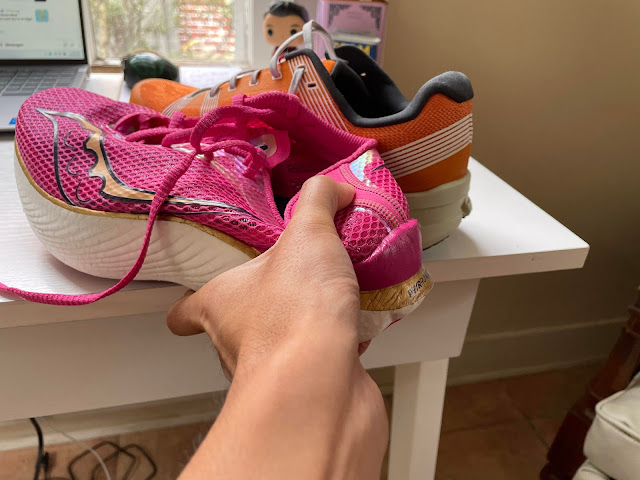DOR Podcast #109: What Heel Counters Actually Do for Runners
Heel counters are often overlooked when choosing a shoe, but their design can make or break a shoe for runners. Heel comfort is critical to the ability to run in a shoe. They're also often touted to promote stability and biomechanical benefits, but what do they actually accomplish? Nate, DJ, and Matt dive into the design, research, and evidence surrounding heel counters. We're also excited to give this month to Club West Track in Santa Barbara, CA.
The Subjective: What's a specific part of a shoe that can make it or break it for you?
Chapters
0:00 - Intro
2:56 - The Subjective: What's a specific part of a shoe that can make it or break it for you?
5:35 - Defining the heel counter
15:14 - The origin & purpose of heel counters
24:33 - The evidence of the effects on heel counters on biomechanics
31:51 - The importance of heel lockdown in carbon-plated shoes
38:38 - Physical conditions that might effect heel fit in shoes
45:24 - How to lace-lock your shoes
48:54 - Wrap-up
By Chief Editor Matt Klein
Many people seem to think that the high arch rigid foot (pes cavus) is ideal and the "flat" collapsed arch (pes planus) is a major deficit. This is not necessarily true. We in the medical field spent many years (long before I was a clinician) believing the that excessive pronation and all things things had to be corrected. Thanks to some studies recently, we are not longer certain of the fact. Dr. Benno Nigg has done some great work summarizing the current research, stating that pronation is not necessarily associated with injury risk and in many cases can be preventative of it (Nigg et al., 2015). A few other authors have also shown foot pronation not necessarily being associated with injury risk and individual biomechanics need to be taken into account (Nielsen, 2013). In fact, those with high and stiff arched feet (lacking pronation) seem to have more trouble, especially with stress fractures. This is something I have observed anecdotally but have seen some research that individuals with pes cavus may have increased risk for foot pain (Burns et al., 2005). My theory is that due to a lack of pronation and muscular shock absorption at the midfoot, there may be more pressure through the plantar fascia, ligaments and bones. So as with many things in life, a middle ground is best. You want some pronation because it is a method of shock absorption! I'm sure you do not want too much though as that theoretically wastes energy due to more time spent on the ground, great joint excursion and many other possible factors.
Recent Episodes
#104: What to Do if Your Knees Hurt on the Run
#105: Hoka Bondi 8 and Mizuno Wave Neo Ultra Review
#106: Detecting Early Warning Signs of Your Running Injury
#107: Finding the Right Shoe for You
#108: Mailbag Episode!
Recently at Doctors of Running
Xtep 160x 3.0 Pro - A super bouncy, super shoe that reminds us of the original Alphafly
New Balance Fresh Foam More v4 - A stable neutral max cushion trainer for long, easy days
Saucony Triumph 20 - The lightest Triumph yet returns to offer max cushion miles
On Cloudgo - A new daily trainer option from On Running
Nike ZoomX Invincible Run Flyknit 2 - A super high stack of ZoomX powers this easy day ride
Skechers GOrun Razor 4 - Brand new update with a new foam and plated forefooteasy day ride
Follow Doctors of Running on Social Media
Facebook: Doctors of Running
Youtube Channel: Doctors of Running
LinkedIn: Doctors of Running
Instagram: @doctorsofrunning
Twitter: @doctorsrunning
Podcast: Virtual Roundtable
Please feel free to reach out, comment and ask questions!
Contact us at doctorsofrunning@gmail.com
NEXT: Nike ZoomX Invincible Run Flyknit 2









